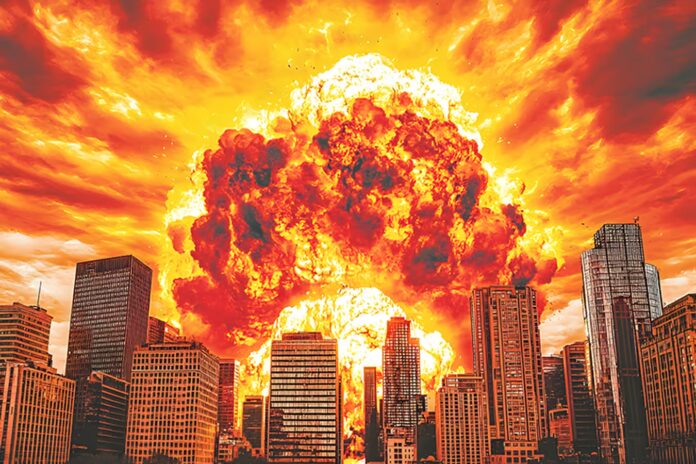You Can’t Outrun It. But You Can Outsmart It
With all the tension going on, if a Nuclear Bomb ever drops…… This might be the most important information you’ll ever read.
While we all hope to never experience such a cataclysmic event, understanding what to do in those critical first moments could literally mean the difference between life and death. Forget running – in this scenario, your brain is your best survival tool.
The Flash: Your First Warning (and Danger)
If you’re unlucky enough to be near a nuclear detonation, your very first indication will likely be an intense, blinding flash of light – far brighter than the sun. This isn’t just a light show; it’s the thermal pulse, packing enough energy to cause instant third-degree burns and ignite flammable materials.
What to do: If you see the flash, immediately drop to the ground, face down, and cover your head and neck with your arms. If possible, dive behind anything that offers even a modicum of cover – a car, a sturdy wall, or even a ditch. This isn’t about avoiding the blast wave (that’s coming next), but protecting yourself from the immediate thermal radiation. Remember, a direct line of sight to the blast means direct exposure to this searing heat.
The Shockwave: Brace for Impact
Seconds after the blinding flash, a colossal shockwave will rip through the air. This isn’t a gentle breeze; it’s a supersonic wall of compressed air capable of leveling buildings, turning debris into deadly projectiles, and shattering eardrums. Its force diminishes with distance, but even miles away, it can cause severe injury.
What to do: If you’re still in the open after the flash, you have mere seconds to react before the shockwave hits. Remain face down, protect your head, and open your mouth slightly. Opening your mouth can help equalize pressure and prevent your eardrums from bursting. Resist the urge to look up until the immediate danger has passed. Flying glass, rubble, and even entire vehicles will become deadly projectiles.
The Fallout: The Invisible Killer
You’ve survived the flash and the shockwave. Congratulations, you’re in the incredibly small percentage. But the fight for survival is far from over. Now, you face the invisible killer: radioactive fallout. This isn’t the mushroom cloud itself, but the pulverized earth, debris, and radioactive particles sucked up into the atmosphere by the explosion and then raining back down.
What to do in the next 10 minutes:
- Seek Shelter, FAST: This is the most crucial step. You need to get into the sturdiest, most protective shelter you can find within those first 10 minutes. Basements, underground parking garages, or the center of large, multi-story concrete buildings are your best bet. The goal is to get as much dense material between you and the outside as possible.
- Go Down and In: Think “down and in.” The deeper underground and the more layers of concrete, earth, or brick between you and the outside, the better protected you’ll be from gamma radiation. If a basement isn’t an option, find an interior room on a lower floor of a sturdy building, away from windows.
- No Car, No Tent: A car or a tent offers virtually no protection from fallout. These are death traps. Your focus must be on finding substantial, dense cover.
- Stay Put (for now): Once inside, resist the urge to go back outside or travel immediately. The highest concentration of fallout will be arriving in the minutes and hours after the blast. You need to shelter in place for at least 24-48 hours, and potentially much longer, depending on the fallout levels and the advice of authorities (if any communication is possible).
Beyond the First 10 Minutes: Preparedness Matters
While this article focuses on the immediate aftermath, true survival hinges on preparedness. Having an emergency kit with water, non-perishable food, a hand-crank radio, and essential first-aid supplies can significantly increase your chances of enduring the long haul. Knowledge, like the information in this article, is also a vital tool in your survival kit.
No one wants to think about a nuclear blast, but understanding the immediate dangers and knowing how to react could be the most important lesson you ever learn. Stay informed, stay prepared, and hope for peace.


